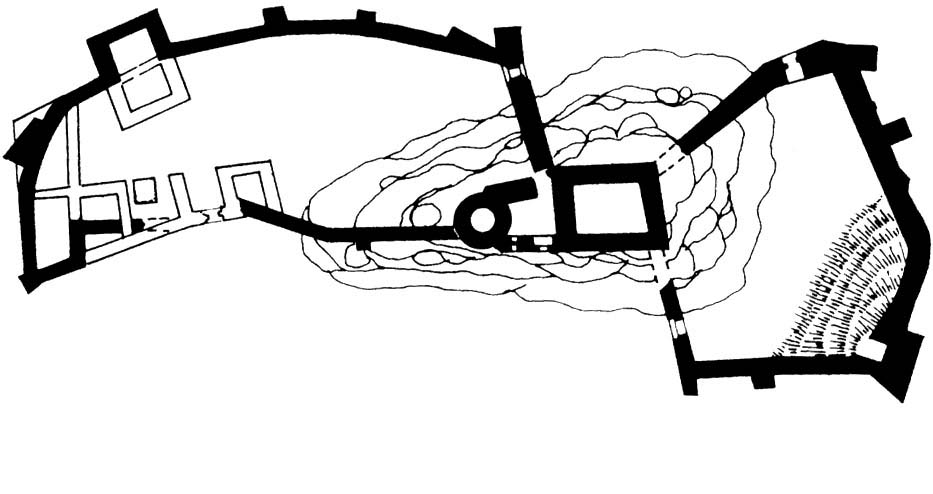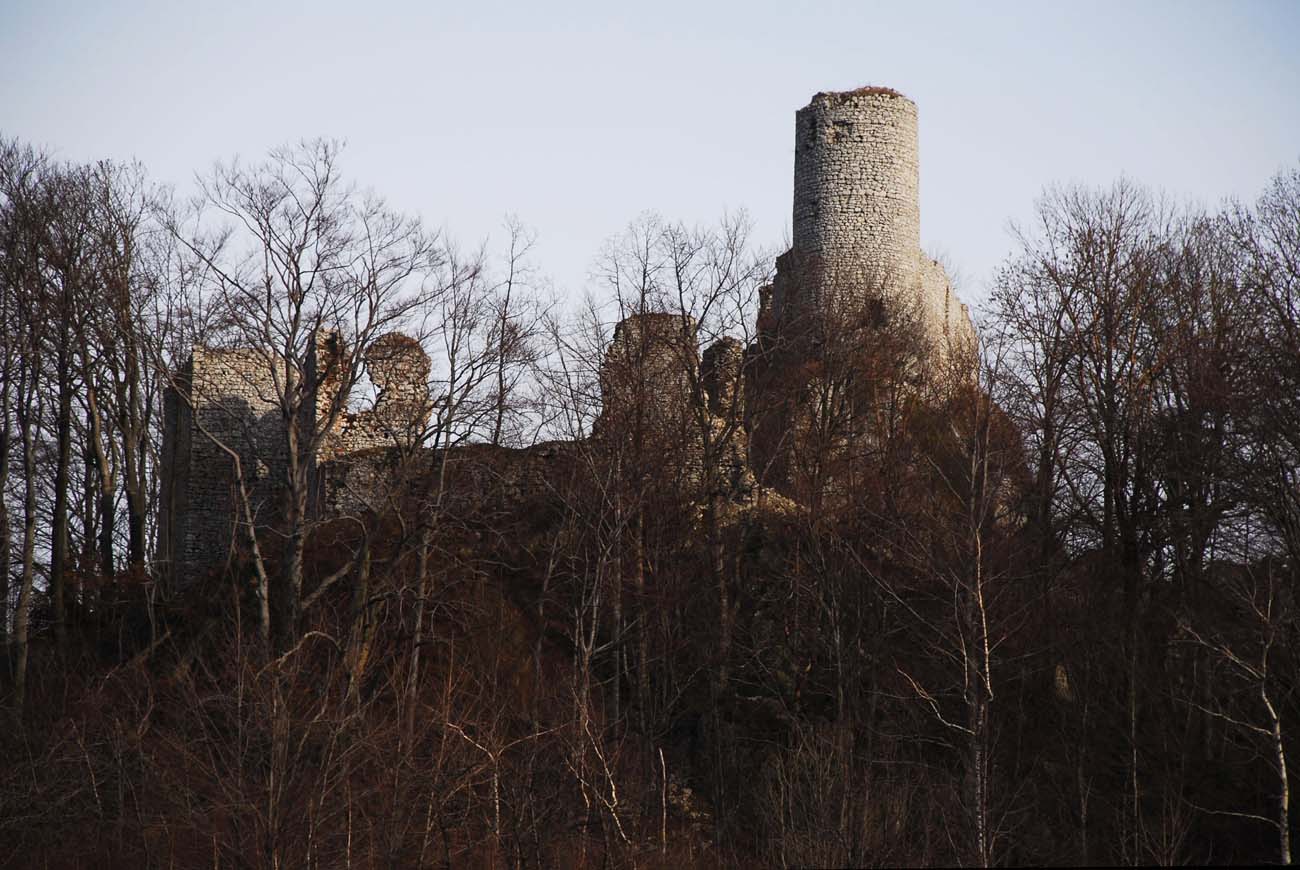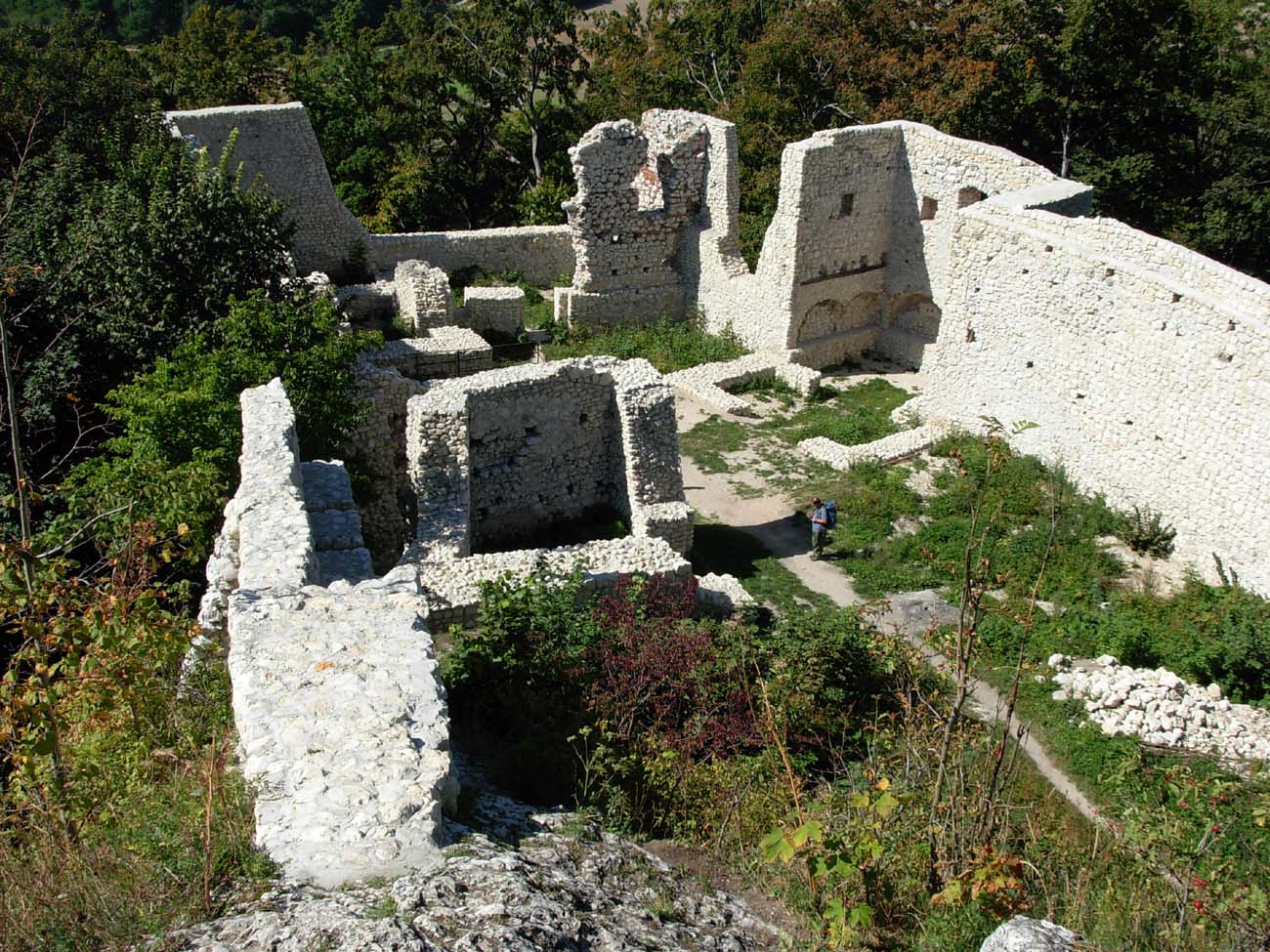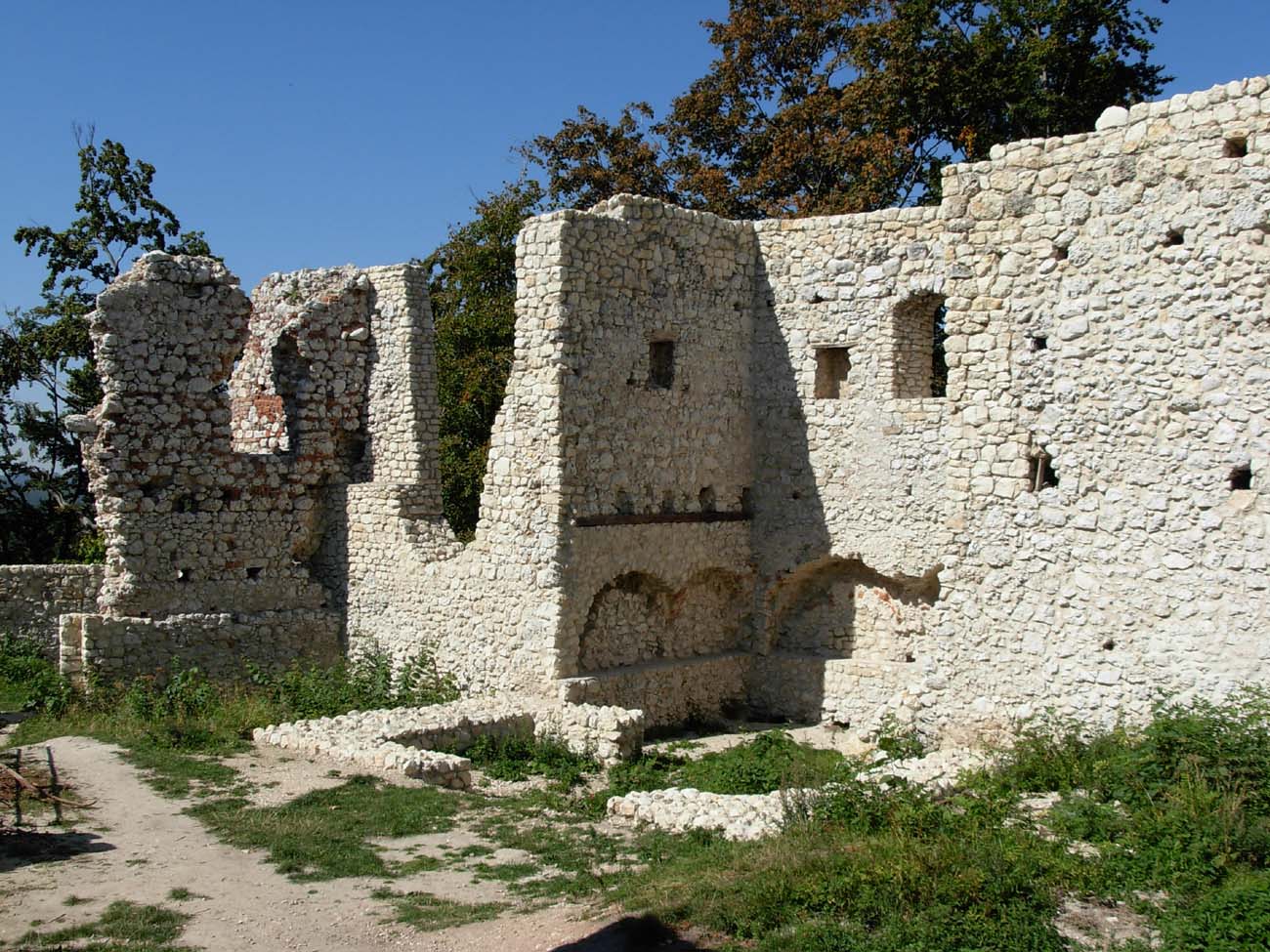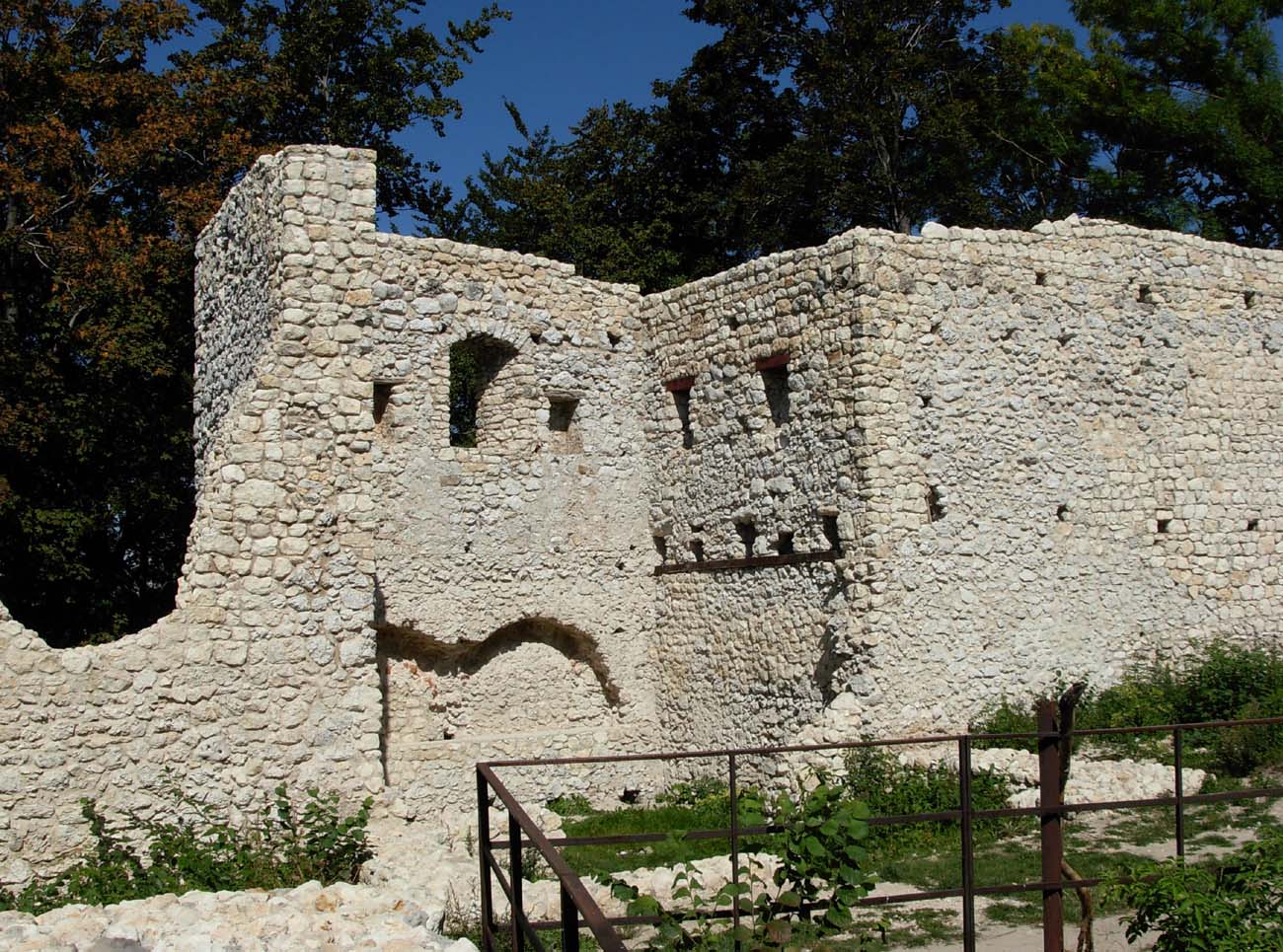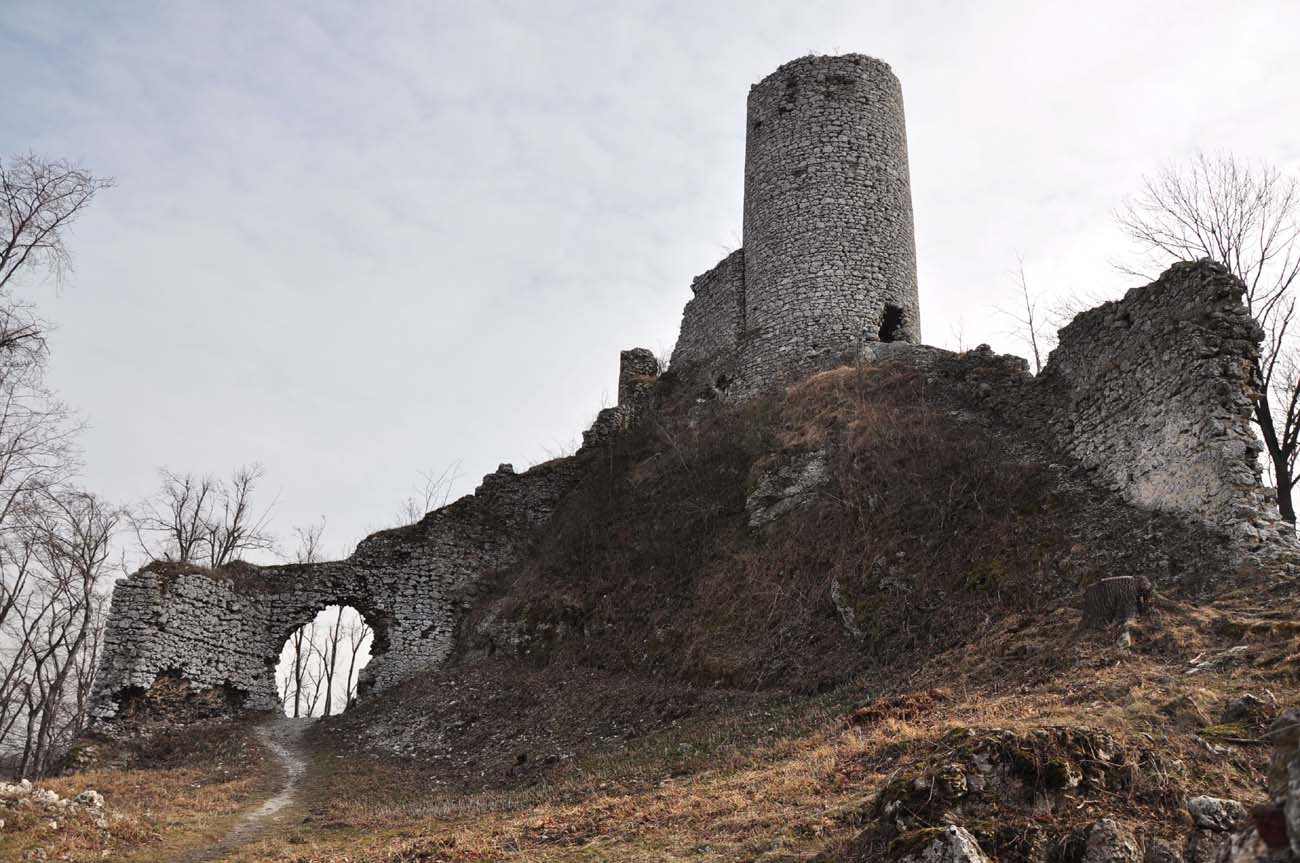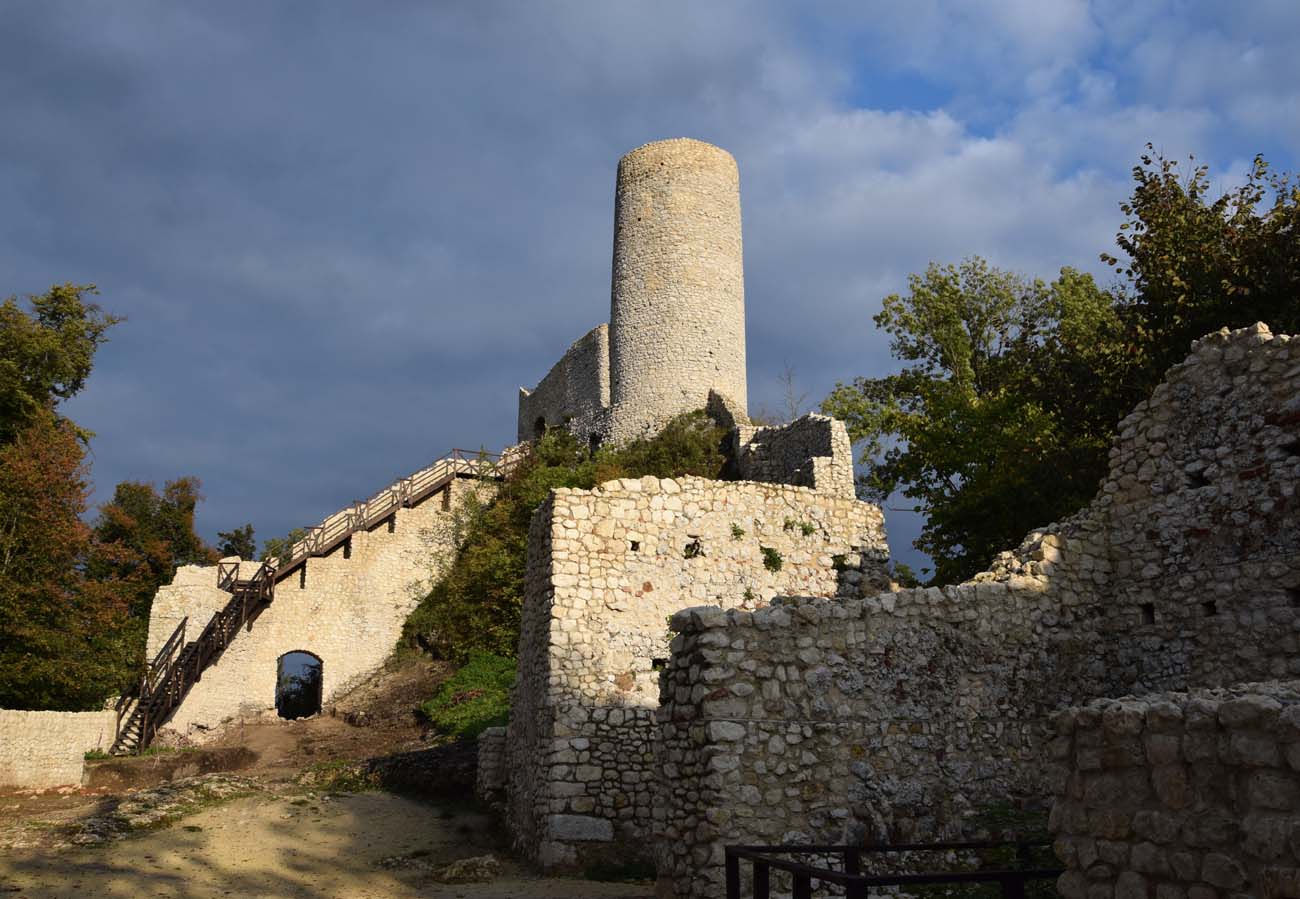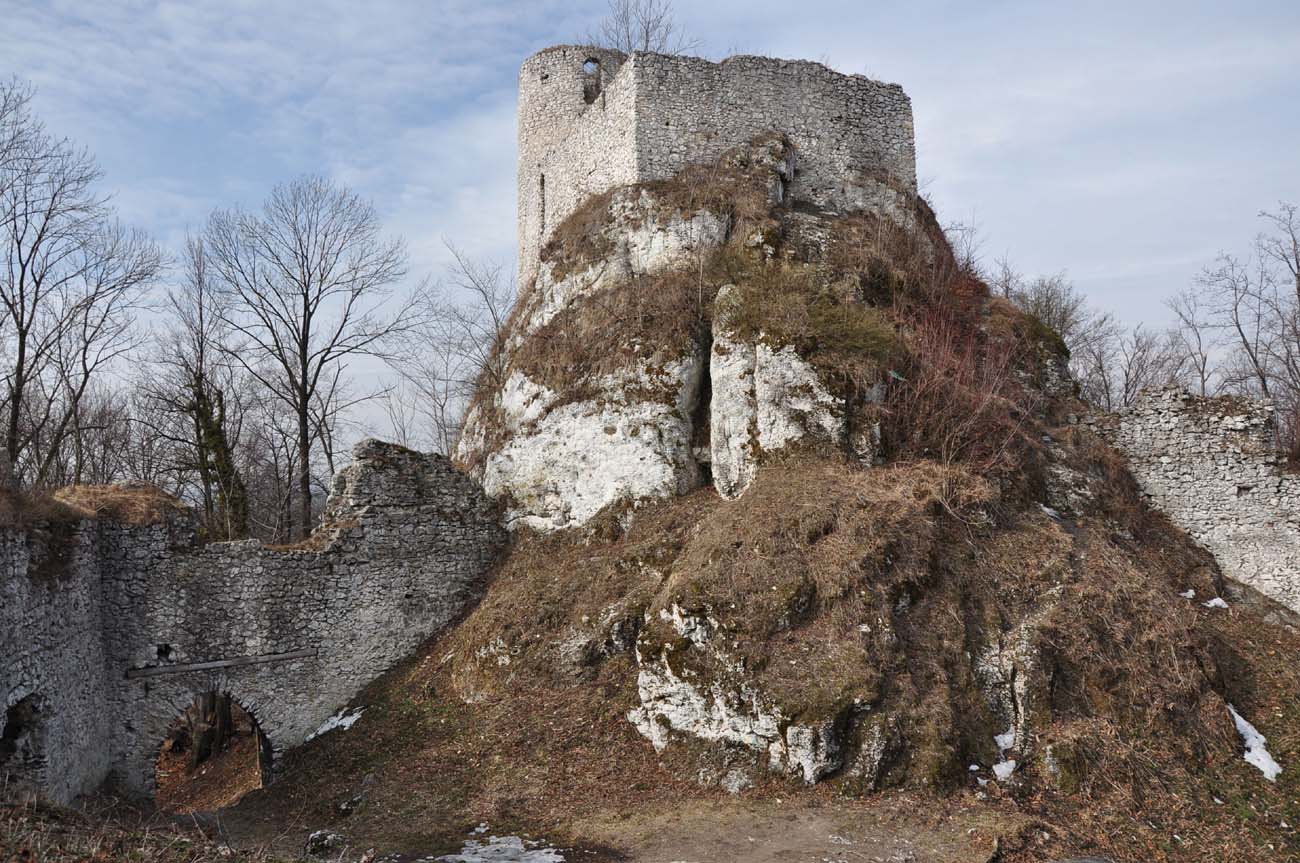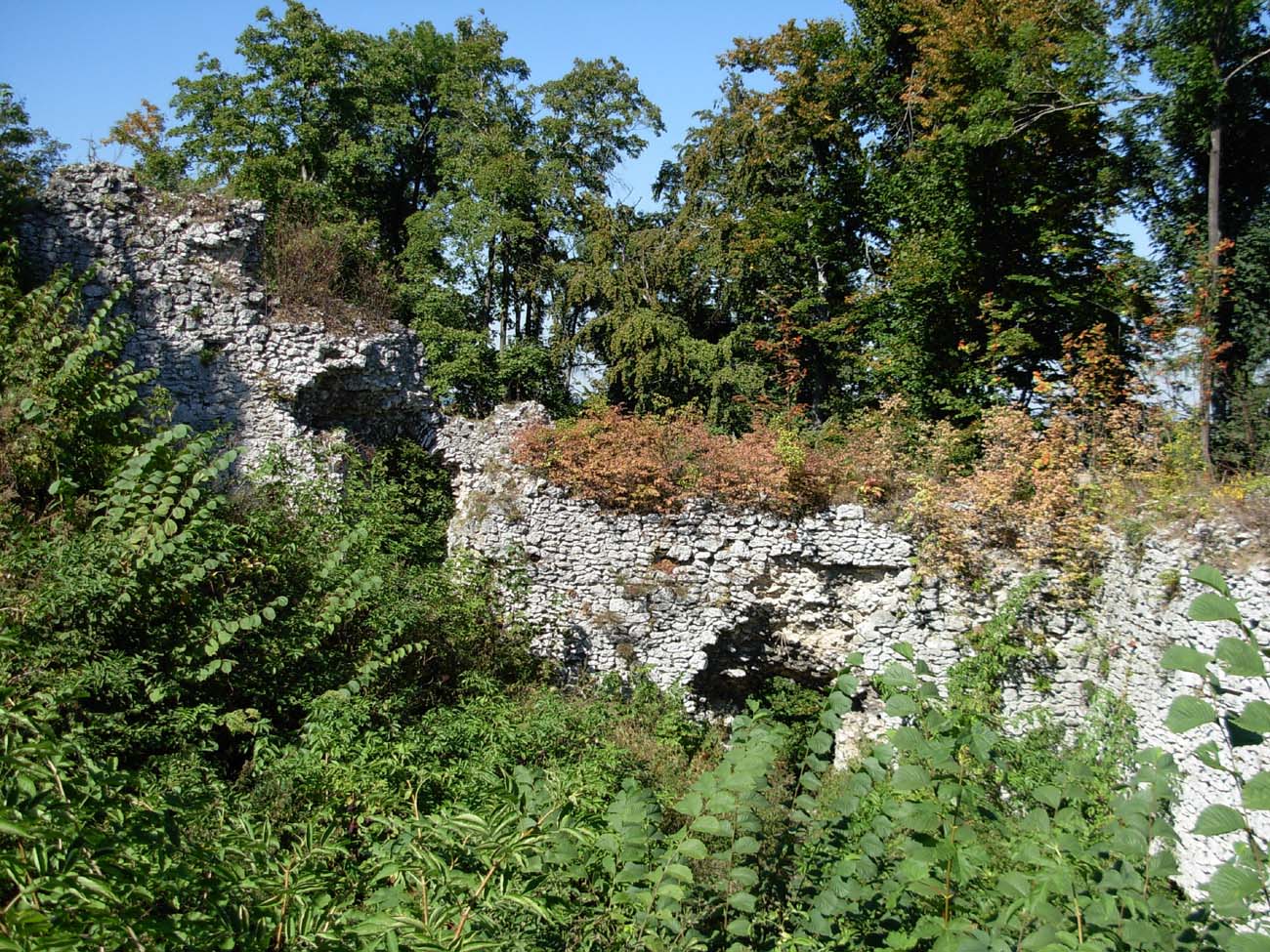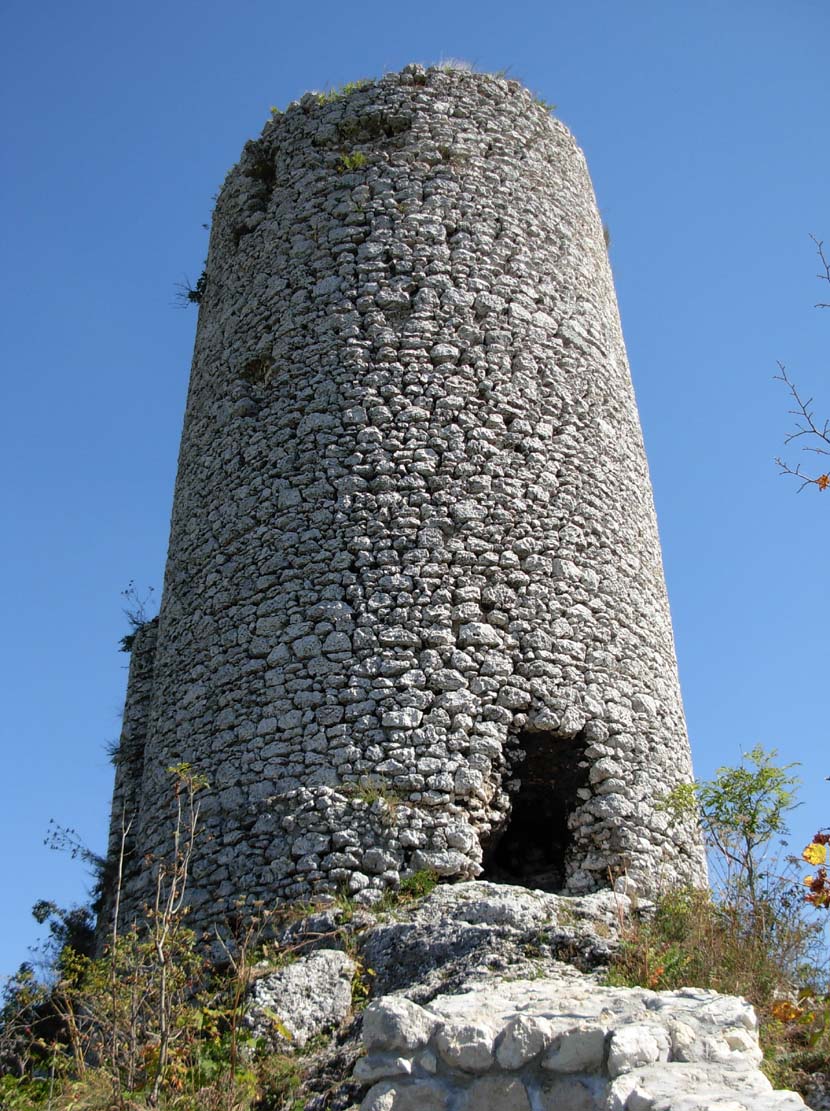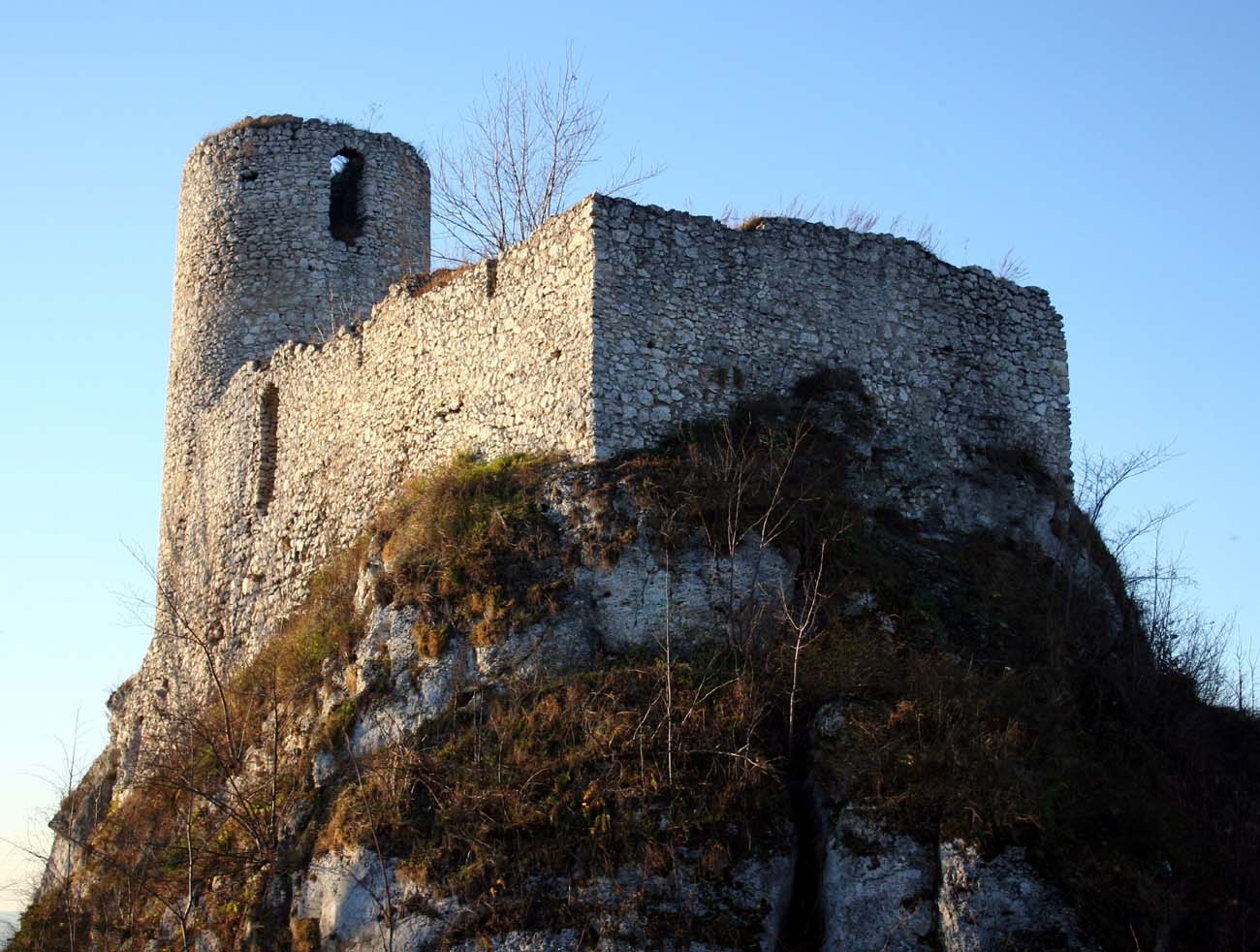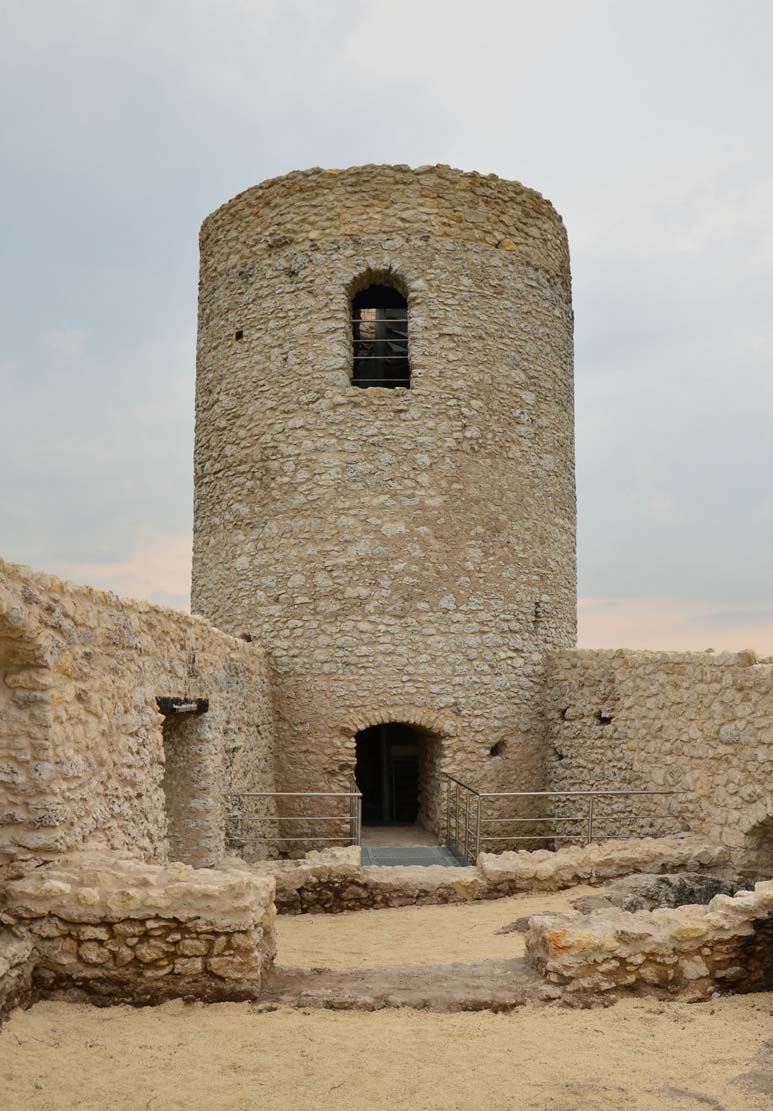History
The castle was first recorded in a document from 1394 in which castle chaplain Dominic was mentioned. The fortress was than called Pilica, and only from the 16th century Smoleń. From the beginning it was the seat of the family of Toporczyk – Pilecki. It may have been raised by Janusz Pilica, the Radom castellan in 1341−1347, the first heir of the land certified in sources. In the 15th century the Pilica lands belonged to the Leliwites, and the first owner of the castle from the new lineage was the Cracow castellan Jan of Pilica. In 1570, the last representative of the family, the starost Jan Pilecki, sold the castle to bishop Filip Padniewski, who did not live in the castle anymore, but in a mansion below the fortress.
Architecture
The fortress consisted of an oval upper ward, occupying the top of a rocky hill, and two adjacent baileys. The main part of the upper ward was, built of local limestone, a cylindrical tower with a diameter of about 7,5 meters. It was erected in the western part of upper ward, inside the peripheral wall, running along the edge of the hill. The interior of the upper castle also included a house on the plan of an irregular rectangle.
The economic bases were the five-sided eastern bailey wherein there was an entrance gate. In its south-eastern part the walls turn several times, indicating the probable presence of a tower on a plan close to the rectangle. The western bailey was also surrounded by a wall on the projection of the elongated rectangle and had a separate entrance gate. Inside it was a well with a stone wall. A couple of buildings were erected along its walls.
Current state
The castle has been preserved in a state of a ruin. It has the tower of the upper ward up to the height of 16 meters along with the fragments of the wall, and almost the whole wall of the eastern and western baileys. Only the fragments remained of the lower ward, while the cellars and wells are now almost completely covered. The work that lasted for a few years at the castle led to the rescue of the falling walls, as well as unweeding the castle and adapting it for sightseeing.
bibliography:
Lasek P., Obronne siedziby rycerskie i możnowładcze w czasach Kazimierza Wielkiego [w:] Wielkie murowanie. Zamki w Polsce za Kazimierza Wielkiego, red. A.Bocheńska, P. Mrozowski, Warszawa 2019.
Leksykon zamków w Polsce, red. L.Kajzer, Warszawa 2003.
Sypek R., Zamki i obiekty warowne Jury Krakowsko-Częstochowskiej, Warszawa 2003.

